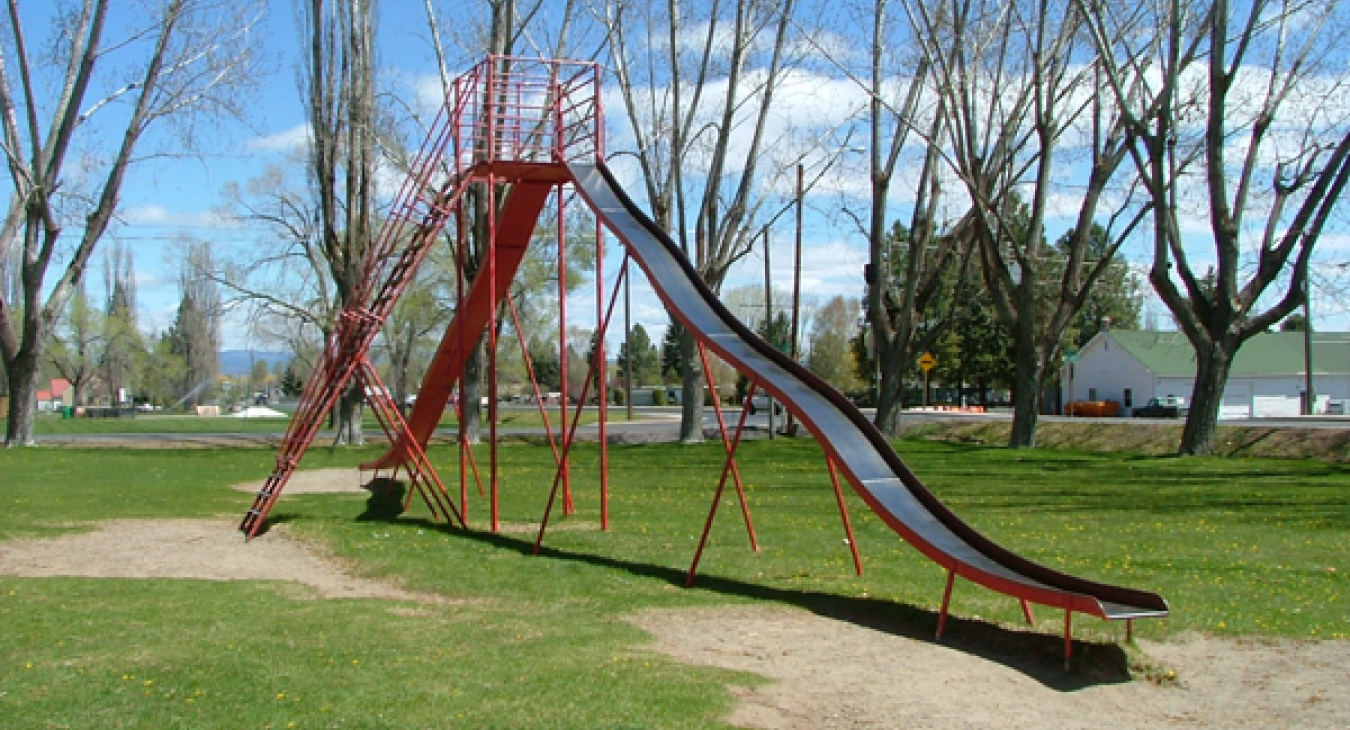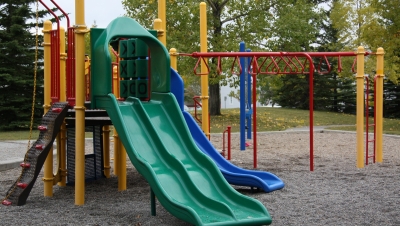I recently read an article on unsafe playgrounds in the city of Chicago by Serena Gordon a HealthDay reporter titled, “Poorer Neighborhoods Often Have Less Safe Playgrounds.” In it she states, “Most playgrounds are safe for children, but many of them -- particularly those in poorer neighborhoods -- need improvement, a Chicago-area survey found.“ Born and raised in Illinois this article caught my interest. I knew from firsthand experience that the Chicago Park District had spent a lot of time and money over the past 20 years upgrading their hundreds of neighborhood playgrounds. There are approximately 500 playgrounds throughout Chicago, IL according to the study and report authored by Dr. Karen Sheehan, medical director of the Injury Prevention and Research Center at Lurie Children's Hospital of Chicago. The researchers assessed 467 of those playgrounds in 2009 and 459 in 2010. In 2011, the researchers also went back and reevaluated the 154 playgrounds that had failed the 2010 survey. The study, “Playground Safety and Quality in Chicago,” in the February 2013 issue of Pediatrics (published online Jan. 21, 2013) took place from 2009 to 2011 and assessed playgrounds in four main categories: age-appropriate design, ground surfacing, equipment maintenance and physical environment. Playground surfacing was the biggest problem. Almost one in four of these playgrounds did not have proper surfacing. Surfacing should be either a uniform surface made from rubber or other energy-absorbing material or loose-fill wood chips. (Erin M. Allen, 2013) Most of the surfacing issues were a result of a failure to maintain a depth of 9 to 12 inches of wood chips. All deficiencies were reported to the Chicago Park District. This led to correcting most of the problems for 40% of those playgrounds thought to be less-than-safe by the end of the study period in 2011.
Congratulations to the Chicago Park District for acting on these deficiencies and taking appropriate actions to remedy the situation. Sheehan’s report says the Park District succeeded in dramatically improving the quality of playgrounds. The authors used the four main criteria, as stated above, to assign each playground a safety score. The majority met the criteria for age-appropriate design and physical environment. A failing grade was most likely due to problems with ground surfacing, such as not enough wood chips to cushion falls, or equipment maintenance issues. At the start of the study, most playgrounds were in fair condition. Beyond the surfacing issues, rust or peeling paint was a significant problem at about two-thirds of the playgrounds. I will to come back to these maintenance issues in just a moment.
The researchers are making this data available to these communities so they are better informed as to what is happening in their neighborhoods. Sheehan goes on to say, “It's often about mobilizing political will. We need to recognize that access to safe playgrounds is part of the obesity epidemic solution. If we can get kids outside with a nice place to play, they'll be more active.” The authors conclude that strengthening community partnerships and training surveyors to conduct yearly examinations of playgrounds can create a safer urban play environment for children.
Now I want to take a closer look at the root cause for the most prevalent deficiencies, or shall I call them maintenance concerns, identified by researchers throughout the study. Why were the lack of adequate surfacing and other common maintenance issues the most common denominators that render the play areas less than compliant to even the basic safety guidelines and standards? Why do the researchers recommend training community surveyors to conduct annual safety inspections? This is a situation I find common in many communities and it is by no means unique to the City of Chicago. I believe these issues are not caused by negligence but are simply a case of misguided priorities coupled with a lack of knowledge and some basic staff training. Yes it takes money to maintain public facilities. No one can deny funding shortfalls; however, our public employees should already be conducting routine inspections and maintenance to all public facilities. I bet Chicago’s public employees are already on site on a regular basis throughout the year. Assuming this statement is true, “Why were there so many playgrounds that did not measure up to the basic safety requirements as stated in this study?”
What is lacking, I believe, is some technical knowledge and understanding necessary to take actions required to maintain basic public facilities to current industry standards. Our communities expect and deserve this basic requirement. Most often our communities naively take this requirement as a given. The general public assumes their parks and playgrounds are being properly maintained. For the most part the public does not know any better. This is probably the reason the researchers recommend community partnerships and training of volunteer surveyors. Public employees need the basic knowledge and training necessary to maintain public playground equipment and surfacing. They need the skills necessary to conduct regular routine inspections that identify the basic deficiencies. Identifying the problem is only part of the solution. They must be empowered and trained to take appropriate corrective actions to remedy the problems while documenting their actions in writing, so everyone understands what has been done to maintain the area to established standards. These steps will lead to better planning for future budget appropriations. One of the first questions any neighborhood group and/or public agency should ask first is, “What will it cost to operate and maintain this facility throughout its lifespan?” If we cannot afford to maintain it properly, we should not be building it in the first place. A maintenance needs assessment study should be part of the initial playground planning process. This phase of the planning process and the estimated budget for attaining the desired outcome should not cause a financial hardship on the agency. What it will do is require those responsible for the financial support and day to day operations to take a closer look at how they are currently managing. It may require a fresh look at current procedures. By rethinking old ways and re-prioritizing existing policies and procedures, solutions will emerge. Existing funds can be better managed to address the basic public safety issue by ensuring the equipment and surfacing functions as it was intended, from the first day on, and that the entire area is maintained in a reasonably attractive and sanitary condition.
Additionally, researchers found that in areas where more children live, there were more failing playgrounds, yet fewer playgrounds overall. Similarly, neighborhoods with a larger percentage of the population living below the poverty level had more failing playgrounds, and fewer playgrounds overall. According to the study, areas with more African Americans had more failing playgrounds, and areas with more Hispanics had fewer playgrounds.
Sheehan states that a lack of money might be an issue in some of these communities, although she said the park district was working on parks in all areas. In some cases, she said, the lack of available playgrounds has to do with the areas. There may be a lot of industrial buildings and not a lot of open space. Many of these neighborhoods are changing demographically. I believe this often is related to the property values within the neighborhoods; close proximity to their place of employment; access to public transportation; and what people can afford. The changing demographics of our communities present challenges for competing interests for better public services and facilities. Most often, these conditions are what they are, based on what was available prior to the younger families moving into these neighborhoods. Historically, the remaining industrial businesses and the public infrastructure that have survived the times were adequate 50 or even 75 years ago. These may no longer be appropriate for the needs of the current demographics. Acquiring bare land requires so much more than just paying fair market value. It will more than likely require a large capital investment to reclaim the open space. Removing and restoring these “Brown Zones” for safe public use is a costly undertaking. Regardless of this cost, there is no excuse for not maintaining what we already have.
What I found most important in this study was the need for urban community groups to get organized. Yes, by all means get organized and involved. First and foremost, make the case for regular routine safety inspections of their neighborhood schools and parks to assure all meet some minimum acceptable public safety standard established by the community itself. We all may have to accept what we have for the time being but we do not have to accept a lack of responsibility and action for maintaining what we have, in a safe, attractive, and reasonably sanitary condition. As I stated earlier, we would not have to conduct these kinds of studies to empower communities to effect appropriate action from their public servants if we could provide the appropriate training for our public servants and provide the resources necessary to make sure they are executing a routine and preventive inspection, maintenance, and repair program. It is the neighborhood groups that need to hold those responsible for these facilities accountable. Timely and appropriate maintenance of all our public facilities is key to assuring the function of the space is being preserved while providing the public within a reasonably safe environment that will be kept clean and attractive and void of unreasonable sanitary conditions.
This study appeared online Jan. 21, 2013 and will be published in the February print issue of Pediatrics, along with an editorial by Dr. Gary Smith, Director of the Center for Injury Research and Policy at Nationwide Children's Hospital in Columbus, Ohio who states, "Playgrounds are more than just some equipment and mulch. Playgrounds and green spaces can pull neighborhoods together." Smith added, "They can help keep kids active and prevent childhood obesity. Play helps decrease unwanted behaviors and helps improve performance in the classroom. Play is a child's occupation. And, playgrounds are a place where they can challenge and push themselves to grow physically and socially." I think we can safely say we know this to be true.
Is this study a case of “Crying Wolf?” I am not going to get into fair and equal distribution of government services or facilities if this was the main issue of the study. It is a legitimate concern that has to be addressed within the local political framework. If public safety is the main concern then I have given my opinion on what might need to occur to address any perceived short comings now; and in the future. It is good business to be proactive. In spite of all the shortcomings of these play spaces the researchers identified, there was no reference to any existing injury data resulting from these deficiencies. Does this exist? Assuming it does not exist, “How far should the Park District go to address all the deficiencies identified on existing facilities?” I would guess that most of the general public is not even aware of these safety concerns on their neighborhood playgrounds. If on the other hand there were known serious injuries occurring on these playgrounds, the communities and media would be all over the Park District.
What constitutes a safe playground? What is a good playground that meets the needs of the intended user’s developmental needs? How safe is safe? Is a safe playground going to be injury free? What, if any, kind of injury is acceptable to all? Whatever happened to personal responsibility?
In the future, I will begin to look into these questions and how they guide the industry and owner/operators management decisions. I look forward to your comments.












